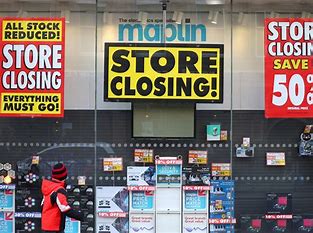The Future of Retail – Stay Shut or Get Creative
The Future of Retail – Stay Shut or Get Creative V#4
With some normality returning to the retail sector, 50% of brands are keeping their doors shut. What is the future of retail and the high street as we know it? What must businesses do to remain competitive, whilst staying in business? David Blackburn, founder of www.MarketingQuotes.co.uk comments.

The retail landscape had been failing for several years, with the casualties including many of the nation’s favourite shops, with Mothercare, Debenhams, House of Fraser, Patisserie Valerie and Marks & Spencer among those that have been forced to close or downsize in response to changing consumer habits. Now with retail centres open again, 50% of brands have their doors firmly shut, as many tenants have negotiated zero rents with landlords for the remainder of 2020, and into 2021. If their doors do open, rents are due and furloughed staff would need to return to work.
With less footfall in underpopulated retail centres, many consumers are not coming back, not enjoying the experience. COVID-19 has fast forwarded the demise of the retail landscape by 5 years, and retail will never ever be the same again. In January it was predicted that in 2020 more than 17,000 stores would close their doors for good in. Now mid COVID, that figure is predicted to rise.
In the UK 82% of consumers have shopped online at some point. 10 years ago, that figure was mid 50%, with the UK having one of the highest ecommerce retail activity in Europe. In December 2019 over 21% of all retail sales were on line, representing £1-in-every-£5 spent, according to the Office of National Statistics. Again, due to COVID that percentage has increased.
Retailers now need to adapt and change within this evolving landscape. Retail spaces were once destinations where the shopping experience partnered with the hospitality sector. Now with cinema’s, café’s, bars, restaurants, and gym’s closed, 2020 may herald the death of the shopping centre or retail park.
Intu Properties, one of Britain’s largest shopping centre operators, recently appointed accountancy firm KPMG as administrator to make a “contingency plan” for administration, if it cannot reach an agreement with its creditors for the Trafford Centre and Lakeside, which may close, asking the question, who is next?
How can all retailers plan for survival?
The online marketplace is the future! To be competitive retailers must allow shoppers to purchase online, not relying on shoppers walking into a store. No longer seen as fashionable, M&S is ditching its clothing stores as they have lost the eye of the consumer. However they are also victims of the digital revolution. In a recent TV interview, M&S was criticised for its arrogance, with an executive being quoted as saying, ‘You know, we don’t really need to go onto the internet. People like to come into a store’. Is this a case of RIP for M&S?
What can retailers do?
The key to recovery is a change in thinking, a change of business model, new propositions, and a review of the retail landscape. New emerging retailers no longer want the burden of long leases in shopping centres and retail parks, requiring flexible and mixed retail spaces, preferring pop-ups, markets, tertiary retail space, smaller retail units and more importantly, a solid on-line presence.

The key is ‘re-marketing’ and the need to be to be competitive. All retailers must have a strong web and e-commerce presence, with the ability for shoppers to ‘buy on line’ either for despatch by mail, or for ‘click & collect’.
Morrisons recently opened its cafes as takeaways, launching a new hot-food-to-go service in all 402 of its Cafés nationwide, becoming UK’s biggest fish and chip retailer, selling 2 million portions each year. Now with a tie up with Deliveroo, this true lateral thinking gives the customers what they want, which is food on the table, when they want it, delivered to home. With physical space being so expensive, crippling rents and business rates place additional financial pressures on retailers, brands can seek alternative ways to operate. Argos did this, leaving their stand-alone retail environment, and piggybacking ‘in-store’ with Sainsbury.
What will the future high street look like?
The demise of the shopping centre could herald the rise of the high street, providing exemplary retail spaces, residential accommodation, and all the amenities that modern consumers desire, at affordable rents. The high street has the potential to become a new community space, where people can live, work and play in one social arena.
Town centres and high streets can be at the forefront of engagement in their communities, listening to what people want as opposed to giving them what they think they want. Introduce more living space into central locations, make parking free to encourage further footfall. With workers reluctant to commute into cities post COVID, high streets could offer ‘work hub’s supported by local authorities, with coffee shops, grab and go food options, dry cleaners, heel bars, small independent retailers, and an eclectic mix of retail, providing a more intimate and pleasing environment.
Technology will be the tool that will transform the town centre, meeting the many different consumer needs, offering everything from free Wi-Fi to improved transport links and electric car charging points. But it seems the key to revitalising the high street lies in the heart of the high street itself – with the people who shop, work, and live there.
Written by: David Blackburn, founder of Marketing Quotes, providing businesses with FIVE Agency Quotes for FREE. E: support@marketingquotes.co.uk W: www.MarketingQuotes.co.uk

